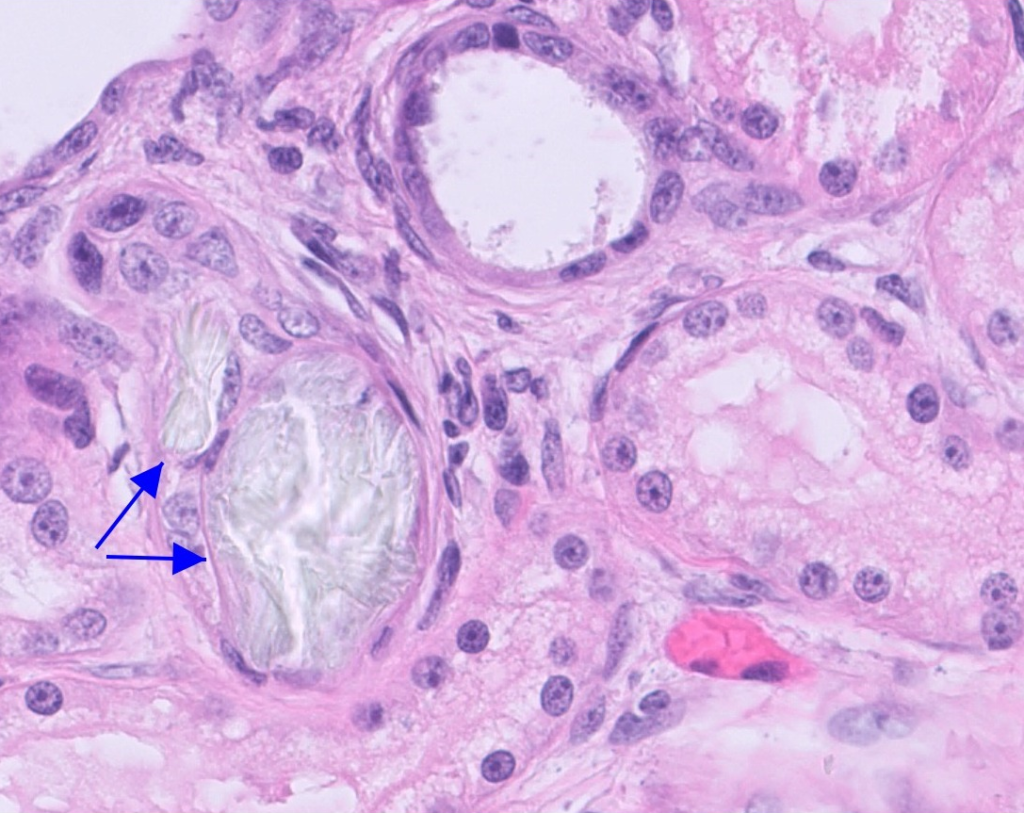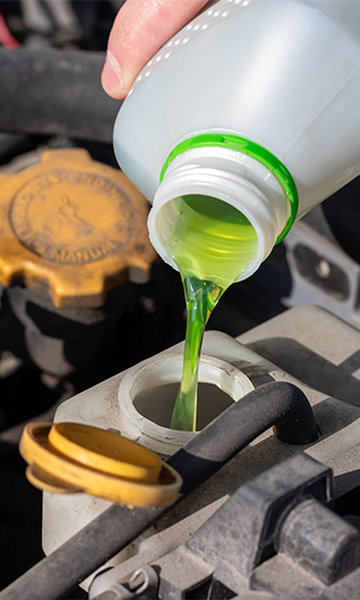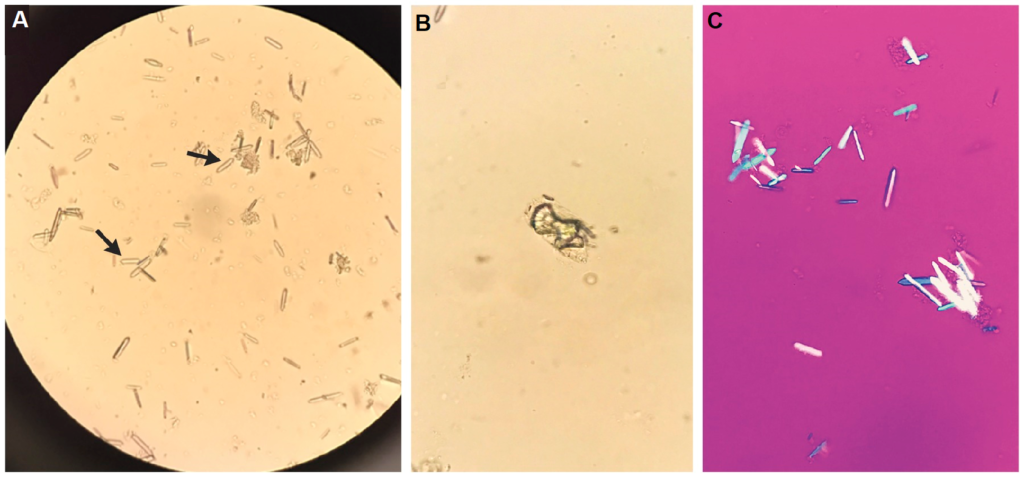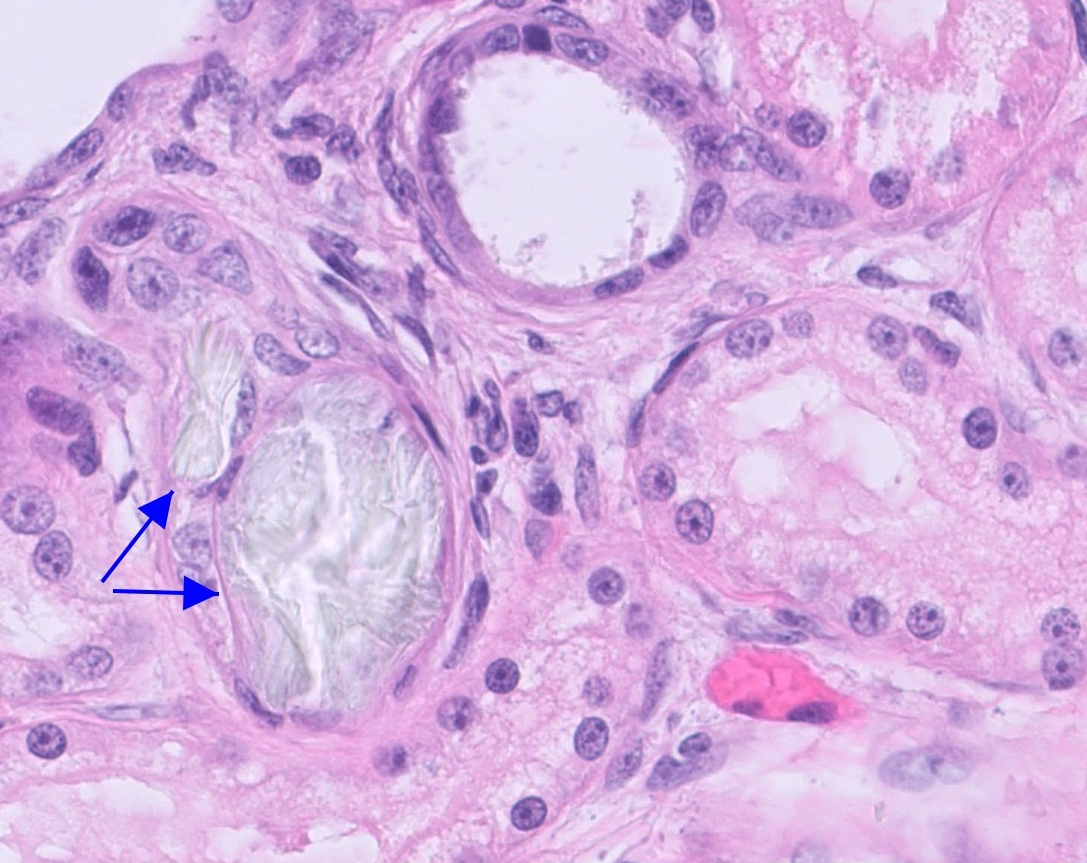CATHY HARVEY
Clinical history:
A six-month-old, female kitten was brought into a veterinary clinic with abdominal pain, lethargy and vomiting. In-clinic bloodwork and urinalysis were consistent with acute renal failure: BUN / urea >50 mmol/L (ref. 6.6-12.6), creatinine 992 umol/L (ref. 67-150), phosphate >5.81 mmol/L (ref. 1.07-2.22) and USG 1.012.
Treatment was not elected and the owner requested euthanasia, as within a week in 2020, four other cats in the household were found dead or presented with similar signs, and did not respond to treatment. The veterinarian offered necropsy and histopathology to confirm a cause of the renal disease in the kitten.
Laboratory findings:
On histopathology of both kidneys there was multifocal, severe, subacute tubular necrosis and regeneration with intraluminal retractile birefringent light yellow crystalline material arranged in sheaves (consistent with calcium oxalate) suggestive of ethylene glycol toxicity (Figure 1). Renal oxalosis can also be caused by plants, fungi, Vitamin B6 (pyridoxine) deficiency, methoxyflurane anaesthesia and primary hyperoxaluria, but it is usually from ethylene glycol toxicity.

Discussion:

Ethylene glycol toxicity is not common in New Zealand, and has been seen in humans, dogs, cats, poultry and calves. Ethylene glycol is a colourless, odourless, palpable sweet tasting liquid (Figure 2) used in the manufacture of multiple chemicals; however, most poisonings occur as a result of ingestion of automobile antifreeze solutions. These solutions usually include a colouring dye so that they are not mistaken for water or a soft drink, but the safety precaution does not deter children and animals.
The majority of ingested ethylene glycol is excreted unchanged in the urine. Ethylene glycol is degraded into glycoaldehyde by alcohol dehydrogenase, which is converted to glycolic acid and enters into the various pathways of metabolism, one of which produces oxalic acid. This combines with serum calcium and forms a soluble calcium oxalate complex which is filtered by the glomeruli. Calcium oxalate precipitates to form crystals in the tubules and causes acute tubular necrosis. The crystals are light yellow, arranged in rosettes, sheaves or prisms, and birefringent (Figure 3).
Ethylene glycol is more toxic in species like the cat, which excrete the most oxalate and unchanged ethylene glycol in the urine.
How to diagnose:
> Ante mortem – Clinical signs of acute renal failure, elevated BUN, creatinine and phosphate, low calcium, calcium oxalate crystalluria.
> Glycolic acid – Blood (heparin plasma or serum) tests are available at medical laboratories but are uncommonly used.
> Post mortem – Kidneys may be normal or swollen in appearance.
> Histopathology – Tubular necrosis with intraluminal calcium oxalate crystals.

Many thanks to Fiona Tritton, Blockhouse Bay Vet Centre for following this case up to get a diagnosis for the owner.
Reference:
Ethylene Glycol. Veterinary Clinical Toxicology 3rd Edn 2006. Parton, Bruere ad Chambers. Vet Learn publication No.249. p206-212.

